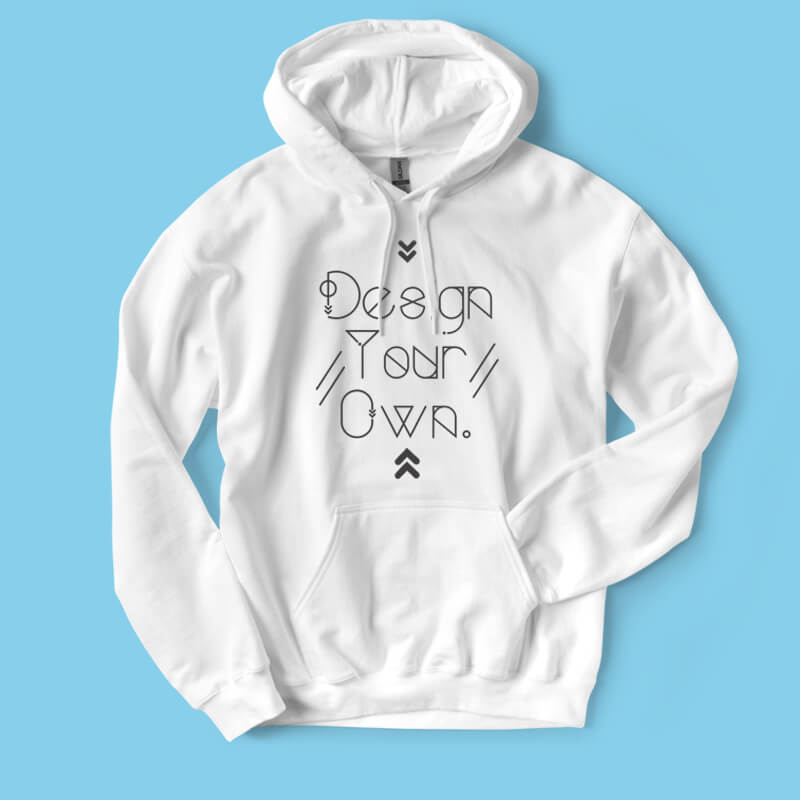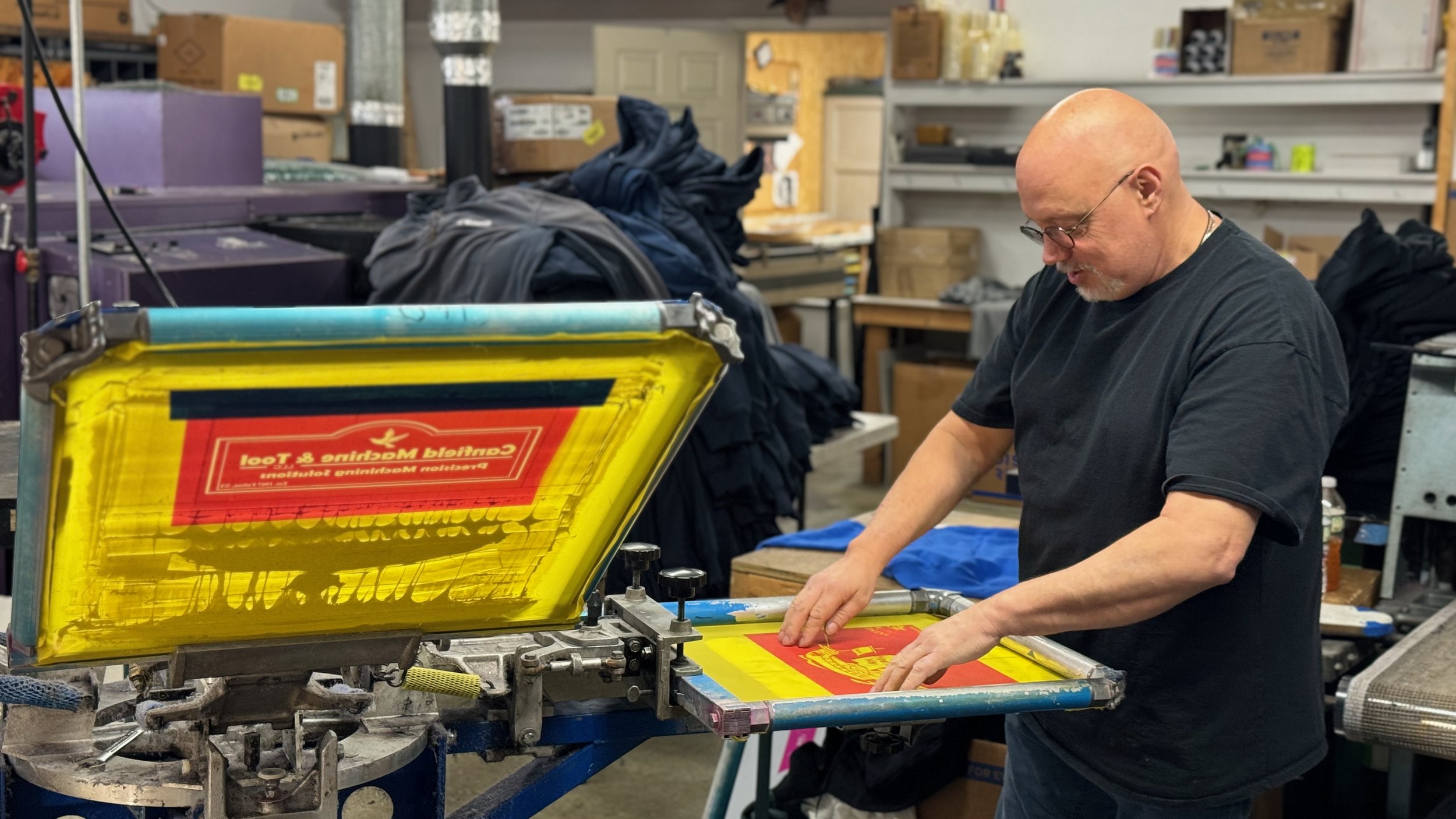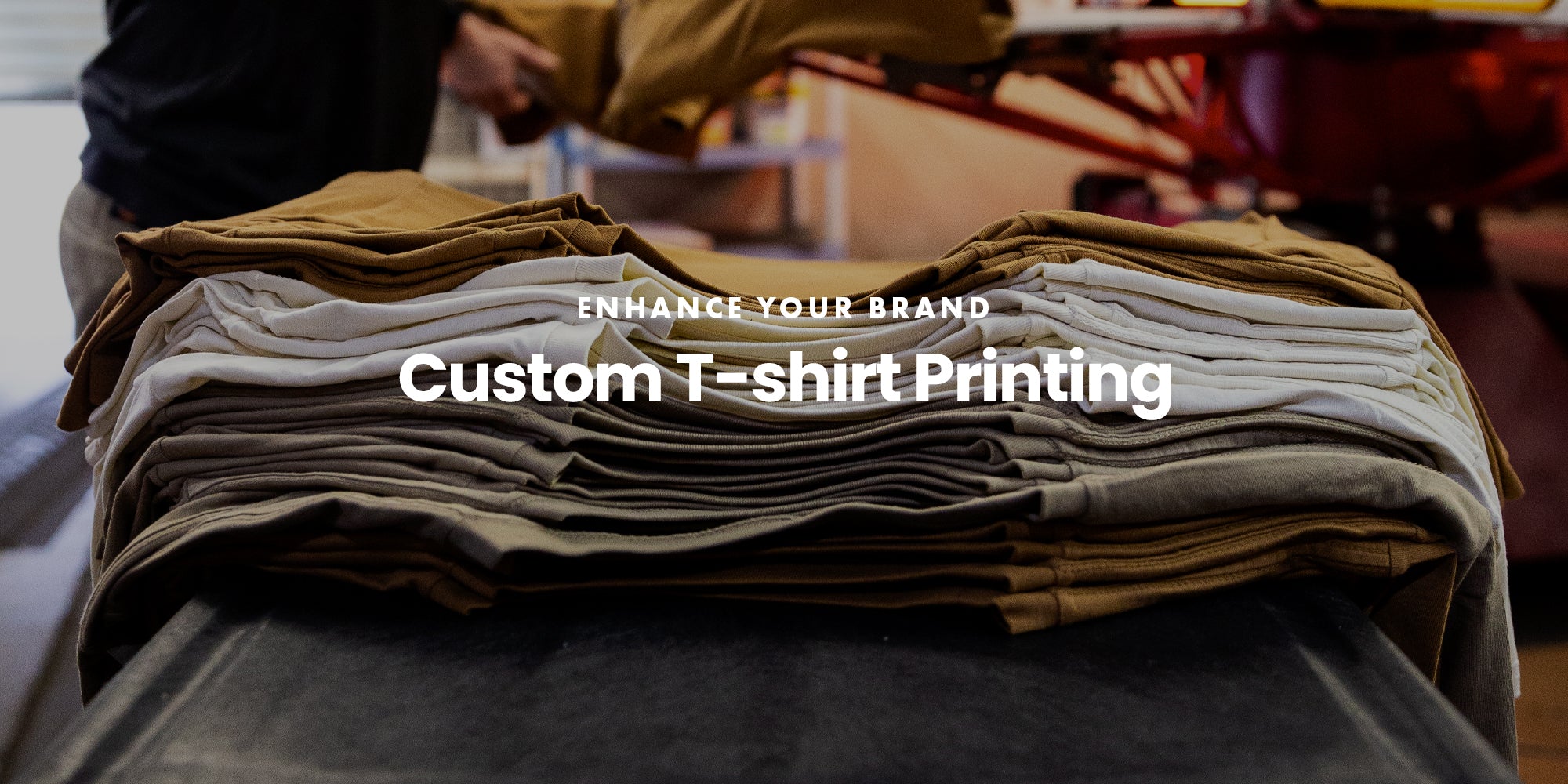Custom Screen Printing for Unique Promotional Merchandise
Wiki Article
Display Printing Uncovered: Every Little Thing You Required to Learn About Tee and Garment Printing Methods
If you have actually ever questioned just how those vibrant designs wind up on your preferred tee shirts, you're in the best place. Display printing is a remarkable technique that integrates art with strategy, providing limitless opportunities for creativity. Understanding the basics, from tools to ink selections, can substantially impact your outcomes. Ready to explore the vital elements that make screen publishing an art type? Allow's uncover the details that can elevate your jobs.
The Essentials of Screen Printing: Just How It Works
When you plunge right into screen printing, you'll discover it's both a science and an art. At its core, screen printing entails producing a pattern, or screen, that allows ink to go through just in details locations (screen printing kit). You begin by picking your style and preparing your screen with a light-sensitive emulsion. When you expose this emulsion to light, it sets, leaving your layout as an unfavorable room.Placement the display over the textile, then make use of a squeegee to push ink with the display onto the garment. Each step is necessary, and understanding them will elevate your display printing skills, changing basic garments right into unique, meaningful items.
Types of Display Printing Strategies
When you grasp the basics of display printing, it's time to explore the various strategies that can boost your styles. One preferred method is conventional screen printing, where ink is pressed through a stenciled display. This technique is fantastic for strong, vibrant shades. After that there's water-based ink printing, which offers a softer feeling and is green, but it calls for a different technique to treating.One more choice is plastisol printing, understood for its resilience and vibrant shades, making it a favored for lots of brands. Experiment with halftone printing to develop gradient impacts and complex layouts.
Important Equipment for Display Printing
To achieve magnificent lead to display printing, having the best tools is basic. Initially, you'll need a durable screen printing framework, which holds the mesh that moves your style onto the garment. Next off, purchase top notch mops; these are essential for applying ink evenly throughout the screen. You'll also require an excellent exposure system to create your displays, along with a washout booth for cleansing them after use. A trustworthy warmth source, like a conveyor dryer or warmth press, is essential for treating your prints to guarantee long life. Do not forget an appropriate work area, equipped with tables and storage space for your materials. Safety equipment, such as gloves and masks, will keep you safe from chemicals and inks. With the right devices, you'll be well on your method to generating professional-quality prints.Choosing the Right Inks and Materials
When choosing inks and materials for display printing, you need to take right into account the kind of ink that works finest for your job. Assume regarding fabric compatibility to guarantee your styles look terrific and last long. Check out environment-friendly ink alternatives to make your printing process a lot more lasting.Kinds of Screen Inks
Picking the best display ink is vital for accomplishing vibrant, long lasting prints that fulfill your project's requirements. There are a number of kinds of display inks to analyze. Specialized inks, such as metal or glow-in-the-dark, can add special effects to your designs.
Fabric Compatibility Considerations
Understanding material compatibility is vital for achieving high-quality display prints, specifically considering that various materials react distinctively to numerous inks. Constantly check your inks on sample textile to ensure they stick properly and preserve shade integrity. Furthermore, maintain in mind that material weight and texture can impact the last end result, so picking the best ink and material combo is crucial for your task's success.Eco-Friendly Ink Options
Eco-friendly inks are coming to be a preferred choice for display printers that desire to reduce their environmental effect while preserving top quality. When selecting inks, take into consideration water-based inks, which are much less dangerous and simpler to cleanse up contrasted to conventional solvents.In addition, try to find inks made from renewable energies, such as soy or vegetable-based choices. By picking the right inks and materials, you'll not just create magnificent styles but additionally contribute to a much more sustainable printing procedure. Make the switch, and your prints will certainly reflect your commitment to the atmosphere!
Preparing Your Style for Screen Printing

File Layout Requirements
To assure your layout looks sharp and vibrant on material, you'll need to pay very close attention to submit style needs for display printing. Beginning with vector files like AI or EPS, as they can be scaled without losing high quality. If you utilize raster photos, select high-resolution files, such as TIFF or PNG, preferably at 300 DPI. Prevent using JPEGs, as they can shed clarity when resized. Additionally, see to it your design has a clear history to avoid undesirable white edges on your prints. Lastly, maintain color modes in mind; CMYK is standard for screen printing, so transform your RGB makes as necessary. By complying with these standards, you'll set your art work up for an effective print.Shade Separation Methods
Shade splitting up is a crucial action in preparing your design for display printing, and understanding it can significantly enhance your print top quality. You'll need to break your design into specific colors, as each shade requires a different screen during printing. Begin by recognizing all the shades in your style and produce layers each. You can use software program like Adobe Photoshop or Illustrator to isolate and separate shades properly. Be specific to conserve each layer as a different file, normally in a style like TIFF or PSD. This precision not only assures precise shade representation but additionally enhances the printing process. By taking note of shade splitting up, you'll achieve dynamic and specialist lead to your screen-printed garments.Resolution and Dimension
Attaining the very best lead to screen printing begins with assuring your style has the appropriate resolution and dimension. Preferably, your artwork needs to be at least 300 DPI (dots per inch) for sharp, clear prints. Your last product may look amateur and pixelated. if you utilize lower resolution.When it comes to size, think about the measurements of your print area. Layout your artwork to match the final print size, preferably creating it in the real measurements you'll be publishing. In this manner, you'll prevent any unforeseen scaling concerns.
Constantly examine your layout in both vector and raster layouts. Vector graphics can be scaled without losing high quality, making them ideal for display printing. Preparing appropriately will ensure your design looks fantastic on every garment!
Step-by-Step Screen Printing Process
Screen printing is a vibrant procedure that allows you to develop dynamic designs on numerous surfaces. To get going, you'll need a display, solution, and your picked ink. Prepare your screen by cleaning it completely. Next, apply the solution uniformly and let it dry in a dark location. When dry, subject your screen to light with your style positioned on it, which will certainly set the solution where the light hits, developing a pattern - screen printing kit.After rinsing the unexposed solution, your display is ready. Establish it up on your printing surface and align your garment under it. Put ink onto the screen and use a squeegee to press the ink with the pattern onto the textile. Lift the display thoroughly and allow the print completely dry. Heal the ink making use of warmth to assure resilience. That's it! You have actually successfully screen printed your design.
Tips for Effective Screen Printing Projects
While you're diving right into your screen printing jobs, bear in mind that prep work is vital to success. Start by collecting all your materials-- inks, garments, squeegees, and screens. A clean office aids avoid undesirable mistakes, so clean prior to you start.Following, validate your art work is high-resolution and properly sized for your garment. Test your display for appropriate exposure and tidy it extensively to stay clear of smudges. When blending your inks, comply with the producer's guidelines to achieve the appropriate consistency.
During printing, apply even stress with your squeegee for consistent results. Don't hurry; take your time to verify each print fulfills your requirements. After printing, let your garments completely dry entirely before handling or packaging them.
Finally, constantly keep an example of your help future reference. In this manner, you can examine your progression and improve your strategies with time. Pleased printing!

Regularly Asked Questions
The length of time Does It Require To Establish up a Display Printing Job?
Establishing a screen printing job generally takes about thirty minutes to an hour. You'll prepare the displays, mix inks, and readjust the press. The time varies based upon complexity and experience, so stay organized!Can I Print on Various Material Enters Using the Same Technique?
Yes, you can publish on different material kinds making use of the same strategy, but you'll need to change your setups and inks. Some fabrics take in ink in different ways, so exploring guarantees the most effective outcomes for every material.What Prevail Errors to Stay Clear Of in Screen Printing?
When screen printing, stay clear of typical mistakes like making use of the incorrect ink, overlooking appropriate direct exposure times, or skipping pre-press checks. Always test your configuration and maintain tidy screens to guarantee top quality outcomes each time.How Can I Properly Clean and Keep My Display Printing Devices?
To appropriately tidy and preserve your screen printing tools, you need to regularly wash screens with appropriate solvents, check mops for wear, and assure all tools are saved dust-free and completely dry. Uniformity boosts and stops costly repairs performance.Is Display Printing Eco-friendly Compared to Various Other Techniques?
Screen printing can be more environmentally friendly than various other techniques, particularly if you utilize eco-conscious products and water-based inks. By screen printing kit choosing lasting supplies and techniques, you lower waste and decrease your effect on the planet.Display Printing Uncovered: Everything You Required to Know Concerning T-Shirt and Garment Printing Methods
At its core, screen printing involves developing a stencil, or screen, that allows ink to pass through just in particular locations. Placement the display over the textile, after that utilize a squeegee to push ink via the display onto the garment. One preferred approach is standard display printing, where ink is pushed through a stenciled display.When selecting inks and materials for display printing, you require to take into account the type of ink that works finest for your task.
Report this wiki page